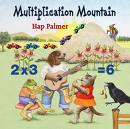This morning’s OC Register reports: “Education Secretary Arne Duncan urged California officials to use the current economic crisis as an opportunity to reform the state’s ailing public schools.” Duncan is worried California’s staggering budget deficit will affect the public school system which once led the nation but now ranks low in academic performance. The Register quotes Duncan: “Honestly, I think California has lost its way, and I think the long-term consequences of that are very troubling.”
What are these “troubling long-term consequences”?
California has a high school dropout rate of 30% which in fact may be substantially higher as reporting norms are not standard and there is pressure to under-report this number. Also how do you define “dropout”? Is a student who drops out but receives a GED a dropout? Federal regulations will require states implement standard norms by 2010.
If roughly one third of our high school students drop out, California has approximately 1.2 million young people destined for nothing more than minimum-wage jobs. These young people will occupy the bottom rung of our economy, representing $42 billion dollars of lost wages over their lifetimes. Add to this figure, the $11 billion they will receive in welfare. Not surprisingly, they are also more likely to have children while young and be unwed, further perpetuating the cyle of poverty.
Starting adulthood as a high school dropout is a tremendous handicap. 78% of our prisoners are dropouts. It is cheaper to educate than incarcerate.
Of the 70% of our high school students who do graduate, 84% are Asian, 78% are white, 60% are Hispanic and 57% are African-American. Hispanic and African-American students are more likely to be attending inner-city schools. This graduation/achievement gap for Hispanics and African-Americans is troubling. As Bill Gates says, the U.S. has “one of the highest high school dropout rates in the industrialized world. If we keep the system as it is, millions of children will never get a chance to fulfill their promise because of their zip code, their skin color or their parents’ income. That is offensive to our values.”
How do we reverse these trends?
Secretary of Education Duncan urges education officials to compete for more than $10 billion in the $787 billion federal stimulus package set aside for innovation in education, stating the administration will invest in school districts and non-profit groups “willing to challenge the status quo.”
How do we challenge the status quo?
If we challenge the status quo by ensuring competency at the third grade level (all students know how to read, can add and subtract and have mastered the times tables, the building block of mathematics), we are likely to have competent high school students. Parents and teachers have great influence on a third grader. By high school, it may be too late.
Schools, teachers and parents must focus on ensuring math and reading competency for third graders. We need smaller classes, remedial tutoring for non-native speakers and those who have fallen behind. We also need public service announcements urging PARENTS to supplement their child’s education by reading to them and by tutoring them in basic math. These are life skills. Without them, a child’s future is severely compromised.
No more business as usual. Parents must see to it their children attend school, get enough sleep, turn off the television and do their homework. We can blame schools for failing our children but we must also look to the parents and their responsibility particularly in their child’s early years. Some children begin failing the system in the first grade! These first years are critical. We need intervention early on. A penny on the dollar spent here will return enormous benefits.
Parents must challenge the status quo.
Parents must examine their attitudes toward education and their belief that their child’s education rests solely with the schools. One way to reduce the gap between white and Asian students and their Hispanic and African-American counterparts is for minority parents to encourage the study of mathematics. High-paying jobs such as engineering require a knowledge of algebra. Fewer than half of Hispanic and African-American students take math beyond Algebra II compared to 69% of Asians and 54% of white students. In addition, only 33% of students from disadvantaged families take math beyond Algebra II compared with 72% of students from affluent families. Do the math. Considering this statistic alone, children of affluent families are twice as likely to have higher paying careers. Algebra is now mandated for all 8th graders in California. If we do not ensure students have basic math skills to to pass algebra, the unintended consequence will be even more high school dropouts, particularly among our minority students.
My conclusion: we need innovation in education that challenges the status quo. We need to challenge bureaucratic inertia in our schools. We need funds to improve schools by reducing class size and attracting and retaining great teachers by offering competitive salaries. We also need parental accountability, especially in the child’s elementary school years. A parent is the child’s first and primary teacher. All learning starts at home.
Be careful what you teach. If you believe education holds the key to your child’s future, your child will more likely believe this as well. Believe in your child’s potential and work hard with your child to ensure that he or she fulfills it. We can save the world, one child at a time.
